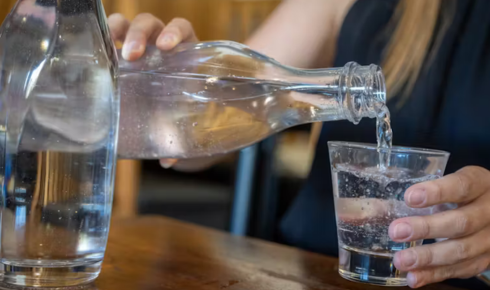
Sometimes, the simplest things in life are the most misunderstood. Take water, for instance. We drink it every day, we need it to live, yet few of us stop to think about what kind of water we’re actually drinking. Sparkling, filtered, mineral, spring — the choices seem endless when you walk down a grocery aisle. But then there’s the quiet, unassuming option that doesn’t fizz, sparkle, or bubble: still water.
It doesn’t call for attention, doesn’t make a sound when you pour it, and yet, it’s arguably the purest form of refreshment. So what exactly is what is still water called in everyday language? The answer sounds simple — but as with many things in life, there’s more beneath the surface.
The Meaning Behind “Still”
The term “still water” literally means water that hasn’t been carbonated or infused with gas. It’s the opposite of sparkling water, which gets its fizz from dissolved carbon dioxide. Still water can come from various sources — natural springs, artesian wells, municipal taps, or filtered systems — but its defining trait remains the same: no bubbles, no pressure, no frills.
When you pour it, there’s silence. No hiss, no fizz, just stillness. That’s where the name comes from. But beyond the definition, still water represents something more — simplicity and balance. In a world obsessed with “extra” everything, still water is content just being itself.
And maybe that’s why it feels so grounding.
The Quiet Preference of Many
Not everyone is a fan of sparkling water’s tingle. For some, that effervescence feels too sharp or distracting. Still water, on the other hand, slips down smoothly, quenches instantly, and never competes with the flavor of food or the mood of the moment. It’s the drink of quiet confidence — unpretentious, steady, and essential.
Think about it: at restaurants, most people automatically reach for still water. It doesn’t clash with wine or spice. It complements everything without trying. You could say it’s the introvert of the beverage world — not loud, but indispensable.
Whether you’re hydrating after a run, sipping alongside dinner, or filling a bottle for work, still water fits everywhere. It doesn’t need to announce itself. It just… belongs.
The Science of Calm Hydration
From a scientific standpoint, there’s not a huge difference in hydration between still and sparkling water. Both contain H₂O at their core. But the way our bodies respond to them can vary. Still water, for instance, tends to be easier on digestion, especially for those with sensitive stomachs.
The absence of carbonation means fewer chances of bloating or that uncomfortable feeling after drinking too fast. It’s also less likely to affect tooth enamel since it’s not acidic. Athletes and nutritionists often recommend plain still water because it hydrates efficiently without altering the body’s natural pH balance.
It’s water in its purest, most natural form — nothing added, nothing taken away.
That’s the beauty of still water drink — it’s hydration stripped down to the basics. No bubbles to distract, no artificial enhancements to question. Just clear, cool water doing what it’s meant to do.
Bottled Still Water: A Global Staple
The bottled water industry, massive as it is, thrives mainly on still water. From luxury brands drawn from deep volcanic springs to the plastic bottles lining convenience stores, still water dominates the market. It’s trusted, predictable, and universal.
But not all still water is the same. Some are “mineral” waters, naturally rich in magnesium or calcium. Others are purified through reverse osmosis or distillation. Some are spring-fed, others filtered from municipal supplies. What they share, though, is the promise of purity — water that refreshes without complication.
People in different regions even have distinct preferences. Europeans often favor mineral-rich still waters, while Americans lean toward purified or filtered varieties. In many parts of Asia, still water is associated with health, clarity, and mindfulness — a small, daily ritual of cleansing from within.
Still vs. Sparkling: The Eternal Debate
For years, sparkling water has had a bit of a “luxury” image. It’s the drink of brunch tables, cafés, and hotel lobbies. Still water, meanwhile, remains the classic — humble but timeless.
Some people say they drink sparkling for the texture, the pop, the feeling of something “extra.” But others, particularly those who prefer subtlety, stick with still water because it feels natural. It’s what our bodies expect, after all. Evolutionarily speaking, humans have been drinking still water since the beginning of time — from rivers, lakes, and rain. The bubbles came later, with technology and taste.
At the end of the day, the choice isn’t about right or wrong. It’s about what feels right for you.
Cultural Significance and Simplicity
Across cultures, water holds deep symbolic meaning — purity, renewal, life itself. Still water, especially, is tied to calmness and reflection. Think of how many poems, songs, and paintings use images of still water to evoke peace. A lake at dawn, a reflection in a pond, the hush before the day begins — there’s something profoundly human in that image.
When you sit with a glass of still water, you’re not just drinking. You’re pausing. You’re connecting with something ancient and necessary. It’s as close to nature as most of us get in a day full of screens and noise.
That’s what makes what is still water drink more than just a technical question. It’s an invitation — to slow down, to appreciate simplicity, to remember that not everything in life needs bubbles or flavor to be fulfilling.
Why the Basics Still Matter
In a world where even water comes in “flavored,” “sparkling,” or “electrolyte-enhanced” varieties, choosing still water almost feels rebellious. It’s a quiet statement that you value authenticity over trends. That you find satisfaction in something timeless.
Still water isn’t trying to impress. It doesn’t sparkle under restaurant lights or fizz in fancy bottles. But it refreshes the body and clears the mind like nothing else. It’s the original form of hydration — and maybe, the most honest one.
So the next time you take a sip of plain water, notice it. Feel how it cools your throat, how it feels effortless, how it grounds you for a second. That’s the kind of simplicity we could all use a bit more of.
Final Thoughts: The Beauty in Stillness
There’s a reason still water has survived every trend. It’s timeless, it’s essential, and it’s unbothered by whatever the world’s drinking next. Whether it comes from a spring in the Alps or a filtered tap in your kitchen, still water connects us all — a reminder that life doesn’t always need to sparkle to feel refreshing.
